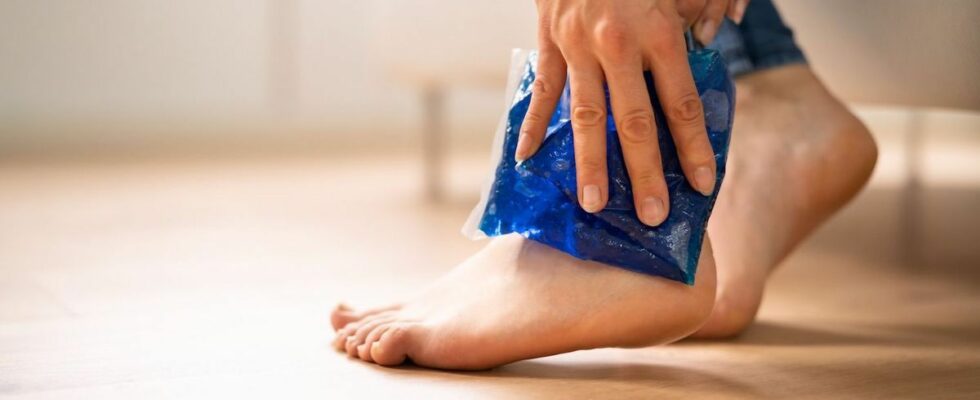Published on
Updated
Reading 2 min.
in collaboration with
Dr Gérald Kierzek (Medical Director of Doctissimo)
Medical validation:
May 16, 2024
If putting ice on a lesion is a common reflex, this gesture does not only have positive effects. To the point of calling into question the use of cold? An update on the correct procedure to follow in the event of an injury, with Dr Gérald Kierzek, emergency physician.
In the event of a sprain, tendinitis or after a violent blow, many of us run to the refrigerator in search of ice, to place it on the wound. Out of habit or enlightened? If in fact, applying cold soothes the pain and reduces inflammation, it is not advisable to follow this process. Explanations.
Inflammation contributes to healing
Certainly, the use of ice causes a decrease in nerve conduction and local vasoconstriction, which temporarily relieves and reduces edema.
However, the inflammatory reaction is a natural physiological mechanism: this process helps protect and repair damaged tissues, by mobilizing immune defenses and promoting healing.
Inflammation thus helps to:
- Isolate and destroy pathogens, such as bacteria or viruses;
- Stimulate the production of new blood vessels;
- Eliminate damaged cells from the injured area.
In other words, for the healing process to proceed smoothly, this inflammation must exist.
“The inflammation that results from sprain participates in healing and therefore in healing. The idea is to respect this inflammation. However, ice is rather anti-inflammatory and would slow down this process“, confirms Dr Gérald Kierzek, medical director of Doctissimo.
Yes to ice, but only in very acute phases
If the occasional use of ice in very acute phases is authorized, it must nevertheless be temporary, says the doctor.
“Icing (10 minutes three times a day) can be used initially, in an emergency, but not continued. There should also be no direct contact with the skin: the risk of skin burns is real. We therefore opt instead for ice packs, cold linen or a bag of frozen peas“, he explains, before adding “Likewise, the use of anti-inflammatories is not recommended in the treatment of sprains.“.
THE current protocol “Peace and love”, implemented in 2019 by two Canadian experts, also suggests avoiding anti-inflammatories (A for Avoidance anti-inflammatory), including ice.
“Peace” phase: Protection, Elevation, Anti-inflammatory to avoid, Compression, Education
In the first days of the injury, it is important to protect the affected part for a few days or even a few weeks depending on the severity of the trauma. The affected limb will be elevated (higher than heart level) to reduce swelling and facilitate blood return. Anti-inflammatories should be avoided because although they are effective against pain, they slow down the speed of healing. A compression bandage (compression) will reduce swelling. Educating the patient on what can and cannot be done is also recommended.
Phase Love: Load (load and movement), Optimism, Vascularization, Exercises
To resume activities, the member must be helped to gradually regain its ability to resist external constraints, in a gradual manner. The patient’s state of mind during this phase is important. Optimism allows for faster recovery. Non-painful cardiovascular activity should be resumed to improve vascularization to the affected tissues.
New recommendations validated by Science, since a systematic review published in 2004 already warned of the little evidence available on the potential effects of ice.
